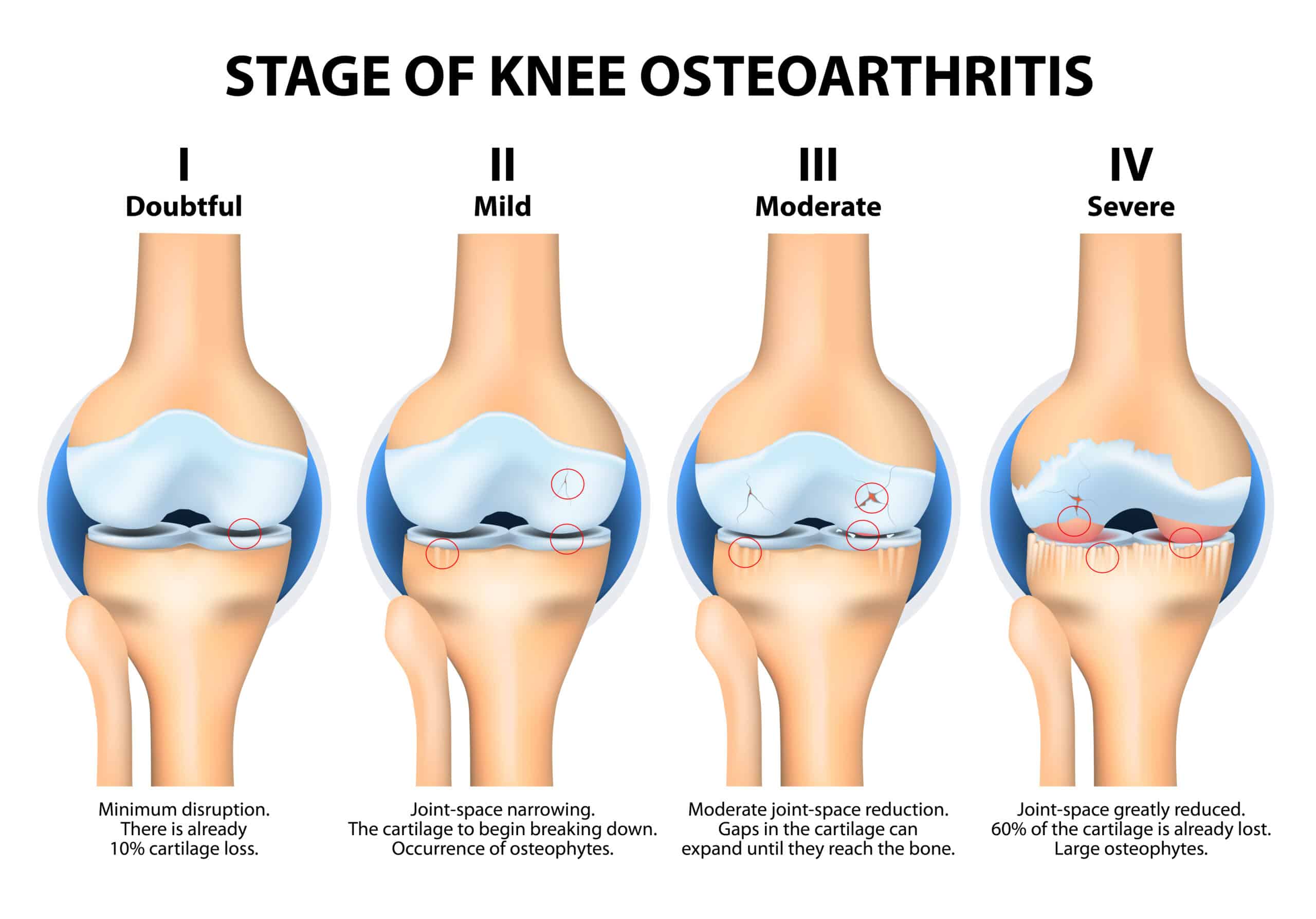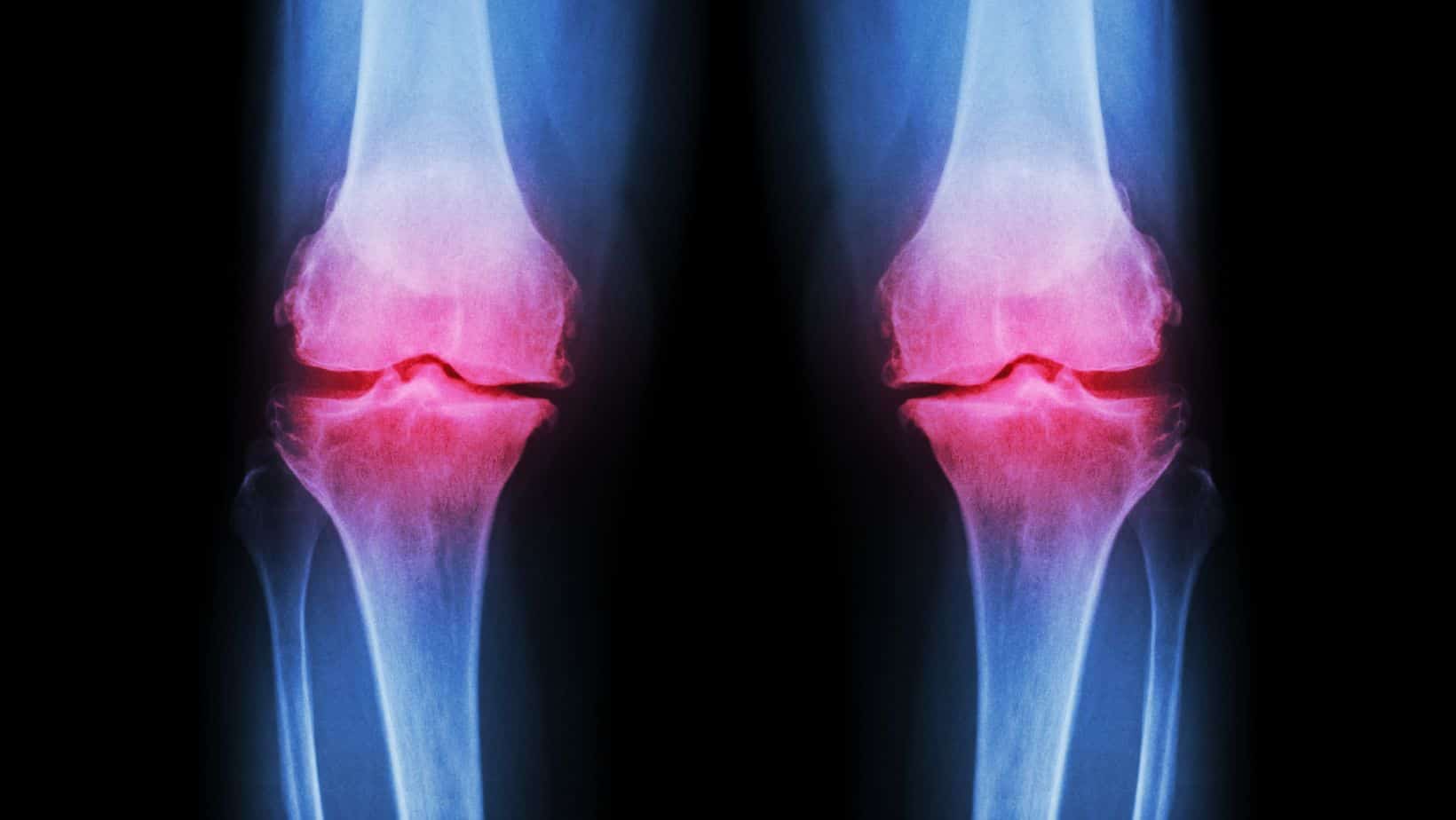Knee Arthritis
Read More >
If you have had an x-ray or MRI scan of your knee you may have seen written in the results, “bone on bone”. But what does “bone on bone” mean? It isn’t a trick question, and it does mean what you think. Bone on bone can occur when there has been severe wear to a joint. A healthy joint will have cartilage covering the ends of the bones at the contact point of the joint. This cartilage helps the joint surfaces to glide smoothly and to move freely. Think of a new hinge on a door that is well-greased. As the joint ages or if there is an injury, this smooth cartilage can become roughened or wear away. Eventually, some parts of the bone will become exposed and have no cartilage covering. If this occurs on both sides of the joint this will create contact of the bone directly on the bone. This does not allow for the smooth, gliding of the joint but will cause pain and stiffness. Think of an old hinge that is poorly greased and has patches of rust.
At the joint of the knee bone on bone has a similar meaning. The femur and the tibia are the two bones that make the main joint of the knee. In addition, there is a patellofemoral joint comprised of the femur and the patella bones. Each of these bones has a joint surface which is covered in smooth cartilage. Between the femur and tibia cones is additional cushioning of a thick cartilage structure that is not directly on the bone but sits between, called the meniscus. Bone on bone in the knee can occur as described before from injury or gradual wear and tear, this can affect the joint between the tibia and femur or the patella and the femur.


The results of an x-ray or MRI may tell you that the knee is bone on bone. The cartilage covering the femur and tibia (or the patella) has reduced and the bones are now in direct contact. Another way that this may be described is that the joint space has reduced. On this x-ray image, you can see the inner (medial) side of the knee has less space between the bones than the outer (lateral) side of the knee.
You can read more about the treatment and management of knee arthritis in our related articles:
Knee Arthritis
Knee Arthritis Exercises
Best Running Shoes for Knee Arthritis
This is not medical advice. We recommend a consultation with a medical professional such as James McCormack. He offers Online Physiotherapy Appointments for £45.